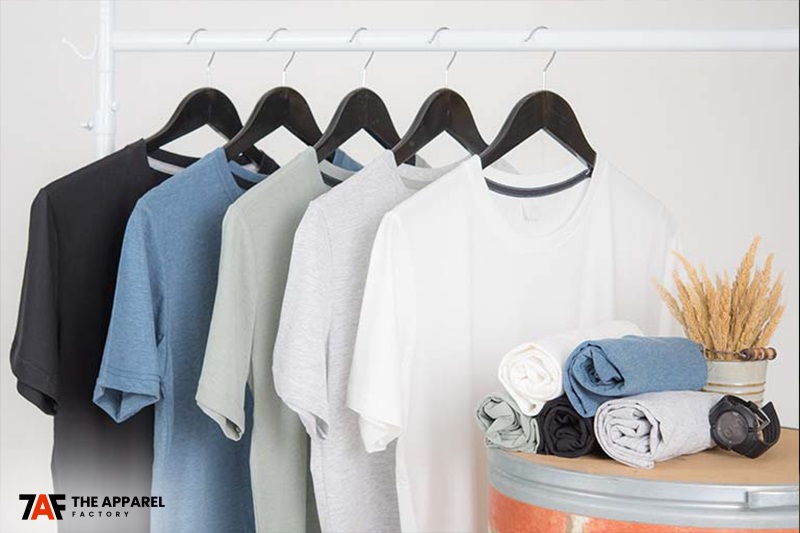Understanding Wholesale Clothing
What is Wholesale Clothing?
Wholesale clothing refers to the process of purchasing apparel in large quantities from manufacturers or distributors at a discounted price and reselling it at a profit. It allows retailers to offer a wide variety of clothing options to their customers while enjoying cost savings and higher profit margins.
Advantages of Wholesaling Clothing
Wholesaling clothing offers several advantages. Firstly, it provides retailers with access to a diverse range of products, allowing them to cater to different customer preferences and trends. Secondly, purchasing clothing in bulk results in cost savings due to lower unit prices. Finally, wholesalers have the opportunity to negotiate favorable terms and conditions with suppliers, including minimum order quantities, discounts, and exclusivity.
Researching and Finding Wholesale Clothing Suppliers
To successfully wholesale clothing, it is crucial to find reliable and reputable suppliers. Here are some effective strategies for finding wholesale clothing suppliers:
Utilizing Online Directories
Online directories, such as industry-specific directories or wholesale marketplaces, are valuable resources for finding wholesale clothing suppliers. These directories provide comprehensive information about suppliers, including their product offerings, contact details, and customer reviews.
Attending Trade Shows and Events
Trade shows and industry events offer opportunities to meet clothing manufacturers, distributors, and other industry professionals in person. These events provide valuable insights into the latest trends, products, and business opportunities. Networking with suppliers at these events can lead to fruitful partnerships.
Networking and Recommendations
Leverage your professional network and seek recommendations from other retailers or industry insiders. Attend industry meetups, join online communities, and engage with professionals in the clothing industry. Recommendations from trusted sources can help you find reliable suppliers with a proven track record.
Establishing Strong Relationships with Suppliers
Establishing strong relationships with your wholesale clothing suppliers is essential for long-term success. Here are key steps to building strong supplier relationships:
Assessing Supplier Reliability
Before partnering with a supplier, thoroughly assess their reliability. Consider factors such as their reputation, customer reviews, quality control measures, and on-time delivery. Request samples to evaluate the quality of their products firsthand.
Negotiating Favorable Terms and Conditions
Negotiate terms and conditions that are favorable to both parties. Discuss pricing, minimum order quantities, payment terms, return policies, and any exclusivity arrangements. A mutually beneficial agreement sets the foundation for a successful partnership.
Placing Sample Orders
Placing sample orders allows you to assess the quality, fit, and design of the clothing products. It also helps you determine the supplier's responsiveness, communication, and order fulfillment efficiency. Evaluate the samples carefully before committing to larger orders.
Analyzing and Selecting Profitable Clothing Products
To maximize your profits, it is crucial to analyze and select clothing products that are in demand and offer favorable profit margins. Consider the following factors:
Identifying Target Market and Trends
Understand your target market and their preferences. Conduct market research, analyze consumer behavior, and stay updated on fashion trends. By aligning your product selection with the needs and preferences of your target market, you increase the likelihood of success.
Assessing Quality and Durability
Choose clothing products that are of high quality and offer durability. Evaluate the materials, construction, and overall craftsmanship. Providing customers with well-made clothing ensures customer satisfaction and builds a positive brand reputation.
Balancing Cost and Profit Margins
While considering the cost of clothing products, ensure that the profit margins are sustainable. Take into account factors such as wholesale price, operational costs, and retail price expectations in your market. Striking the right balance between cost and profit is key to maintaining a successful wholesale clothing business.
Managing Inventory and Stock Control
Effective inventory management is crucial for a thriving wholesale clothing business. Consider the following strategies:
Implementing Inventory Management Systems
Invest in inventory management software or systems that help track stock levels, sales data, and reorder points. Automating inventory management processes minimizes the risk of stockouts and overstocking.
Forecasting Demand and Reordering
Utilize sales data, market trends, and historical data to forecast demand accurately. Regularly review inventory levels and reorder products in a timely manner to avoid stockouts. Adopting a proactive approach ensures a continuous supply of products to meet customer demands.
Avoiding Stockouts and Overstocking
Maintaining optimal stock levels is essential. Stockouts lead to missed sales opportunities, while overstocking ties up capital and incurs storage costs. Regularly analyze sales data, monitor market trends, and adjust your inventory levels accordingly.
Marketing and Selling Wholesale Clothing
Effectively marketing and selling your wholesale clothing is vital to attract customers and drive sales. Consider the following strategies:
Developing a Brand Identity
Create a strong brand identity that resonates with your target market. Define your brand's unique selling proposition, mission, and values. Build a brand story that connects with your customers on an emotional level. Consistently reflect your brand identity in all aspects of your marketing efforts.
Utilizing Online and Offline Channels
Leverage both online and offline channels to reach a wider audience. Establish an engaging and user-friendly website where customers can browse and purchase your wholesale blank t shirts. Utilize social media platforms, email marketing, and online advertising to drive traffic to your website. Offline channels may include pop-up shops, trade shows, or collaborations with local retailers.





Comments